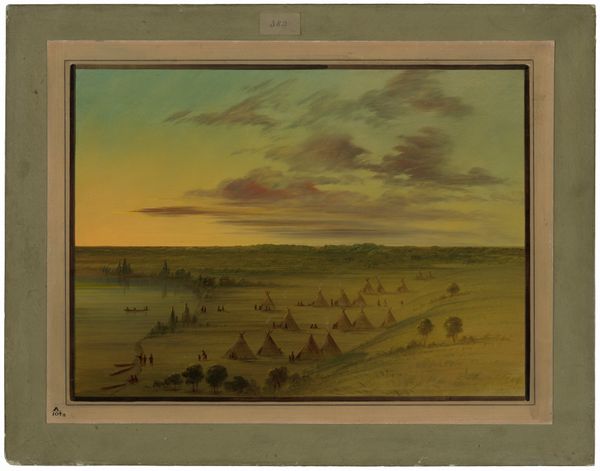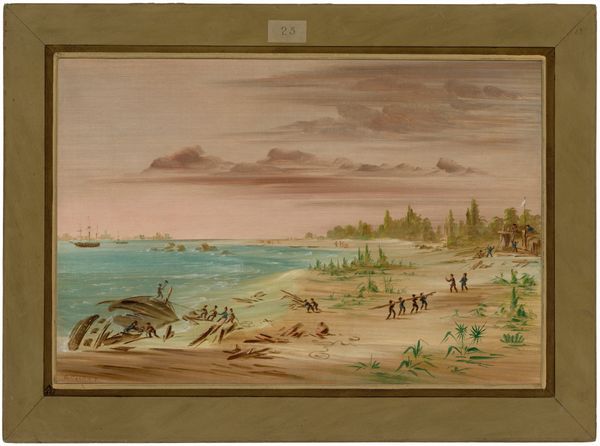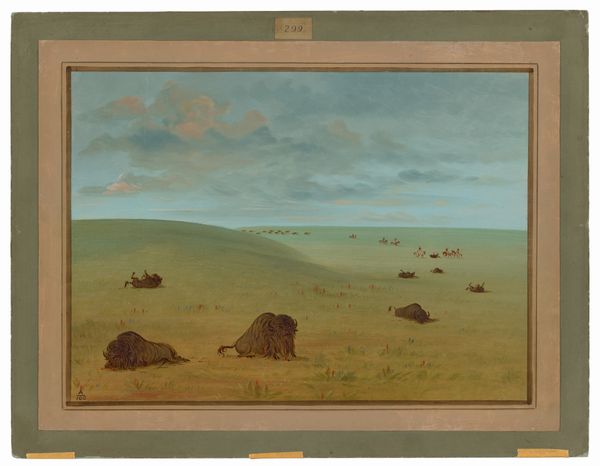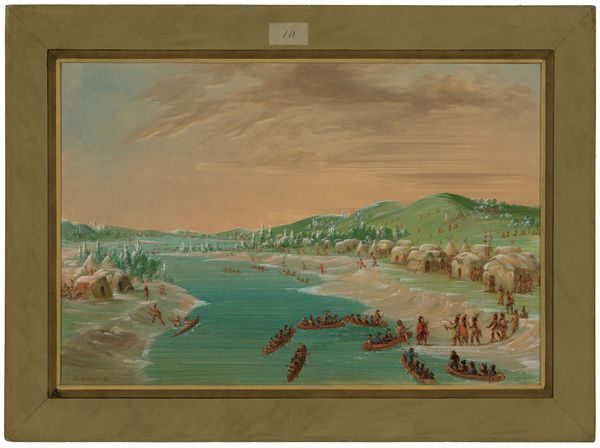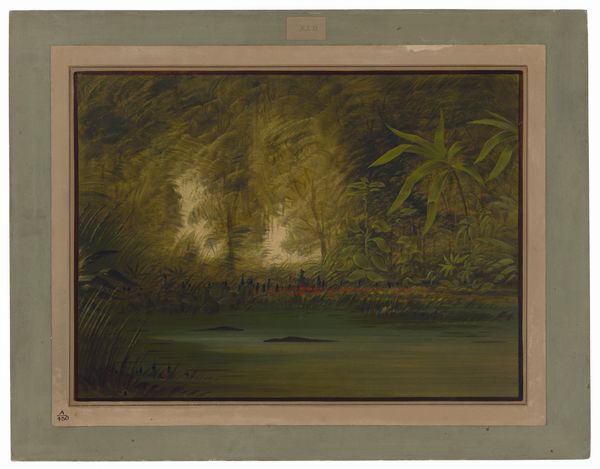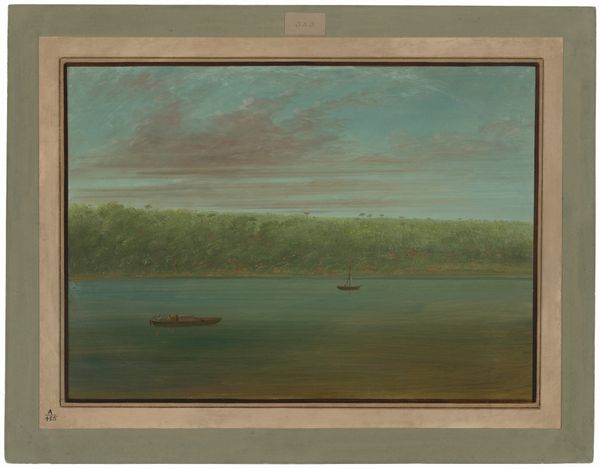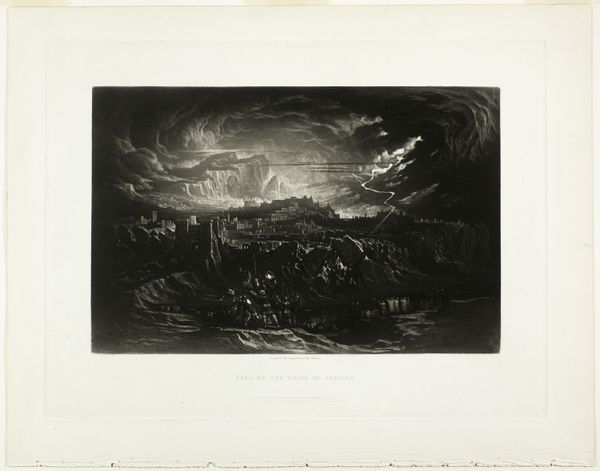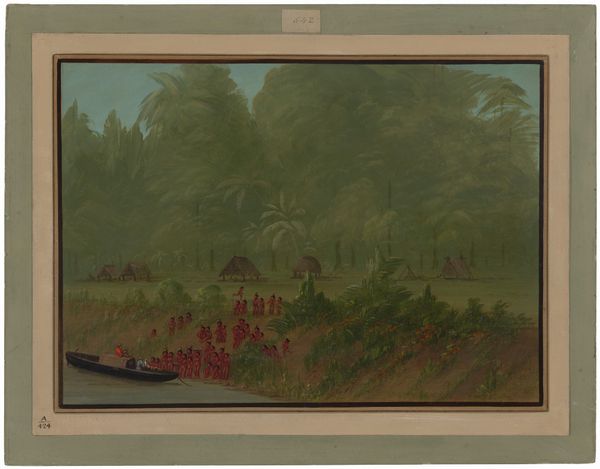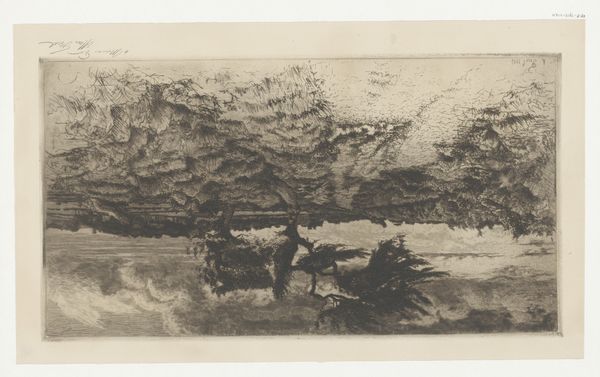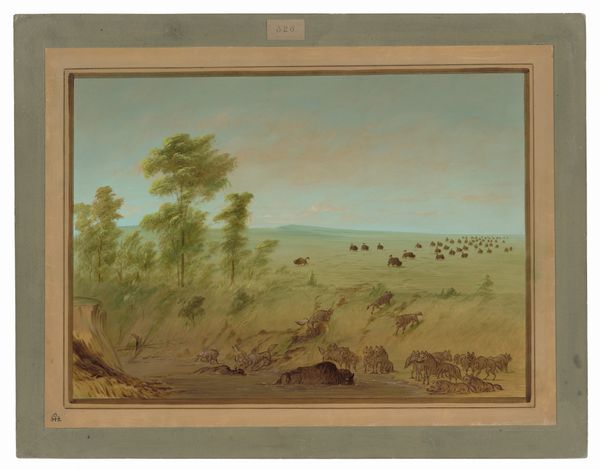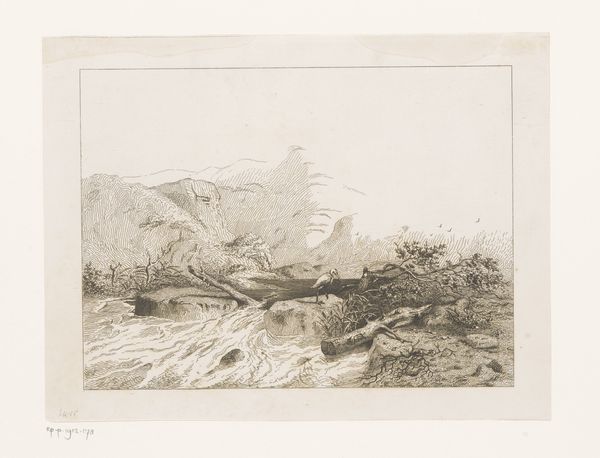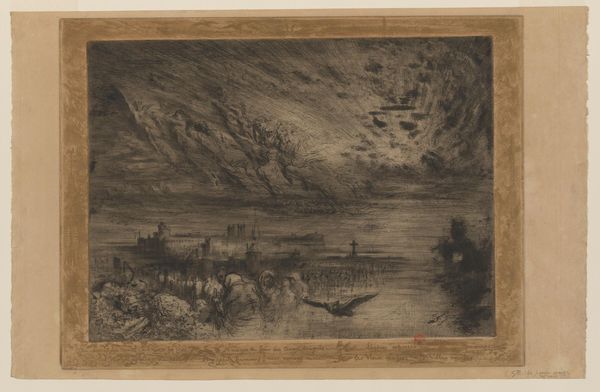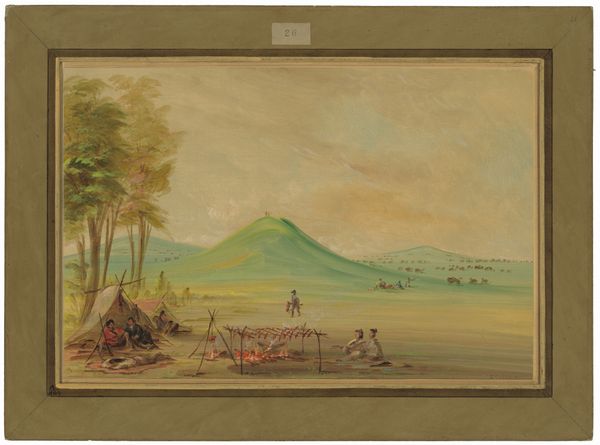
Dimensions: overall: 46.5 x 62.5 cm (18 5/16 x 24 5/8 in.)
Copyright: National Gallery of Art: CC0 1.0
Curator: Here we have George Catlin's "Prairie Meadows Burning," created sometime between 1861 and 1869. It's rendered in watercolor, offering a rather vivid portrayal of a prairie fire. Editor: Oh, wow, intense! The scene is kind of apocalyptic, isn't it? The way the fire just eats up the landscape, those poor bison… it's both beautiful and terrifying. The sky is a wild blend of colors – kind of swirling, like a bad dream. Curator: Indeed. Catlin’s work must be understood within the context of Manifest Destiny. This concept significantly impacted Indigenous communities and the environment during the 19th century. His paintings often engage with themes of dispossession and the ecological consequences of westward expansion. Editor: That definitely reframes my understanding. It's like, he’s not just showing a prairie fire; he’s painting a metaphor for something bigger, more destructive. And that forced removal, that loss of home – ugh, history hurts sometimes. But in my eyes the drama is beautifully tragic! I wonder what those animals thought. Were they confused, terrified...? Curator: Absolutely. The positioning of the animals really speaks to a sense of vulnerability and displacement, especially as these fires were, in many cases, deliberately set to drive out Indigenous populations and clear land for agriculture and settlement. You notice some of them running into the water for their escape from this destructive power. Editor: It's incredible how he captured that sense of panic! The loose brushstrokes make the fire feel alive and hungry. The scene also appears lonely. It makes you wonder about how much beauty and harmony was lost. And like you say it's all intentional, from the animals to that dark, roiling sky, this guy had his vision. Curator: Precisely, and it's important to remember the ongoing relevance of these issues today. Reflecting on artwork like this invites necessary conversations about land rights, ecological justice, and historical accountability, even with this almost romantic presentation. Editor: Yeah, like, are we ever truly innocent bystanders in history’s drama? Anyway, food for thought. Glad I stopped by and saw a different point of view for a while. Thanks for illuminating the canvas. Curator: Likewise. Understanding history in these critical ways is how we continue to question, learn and move forward together.
Comments
No comments
Be the first to comment and join the conversation on the ultimate creative platform.
